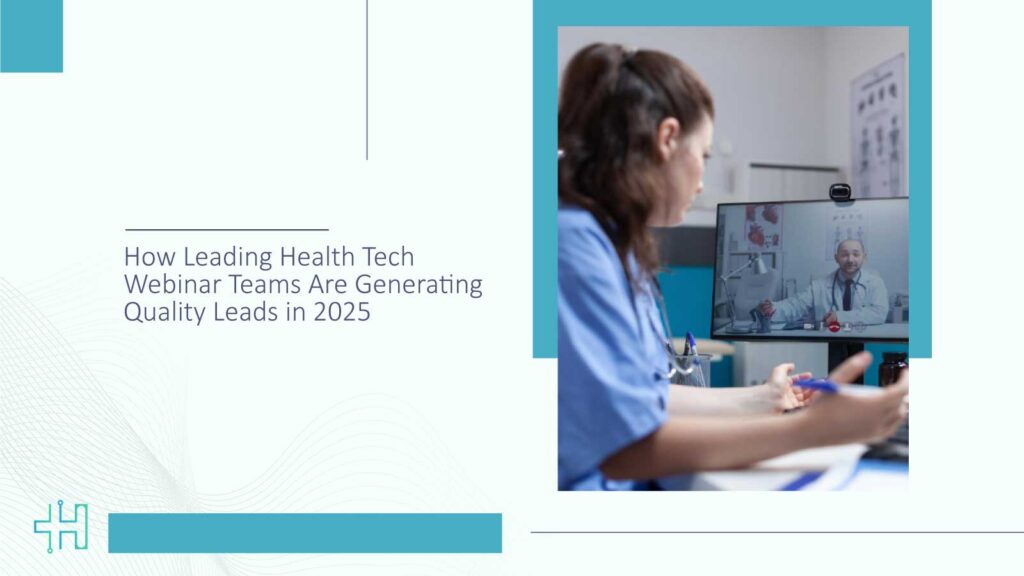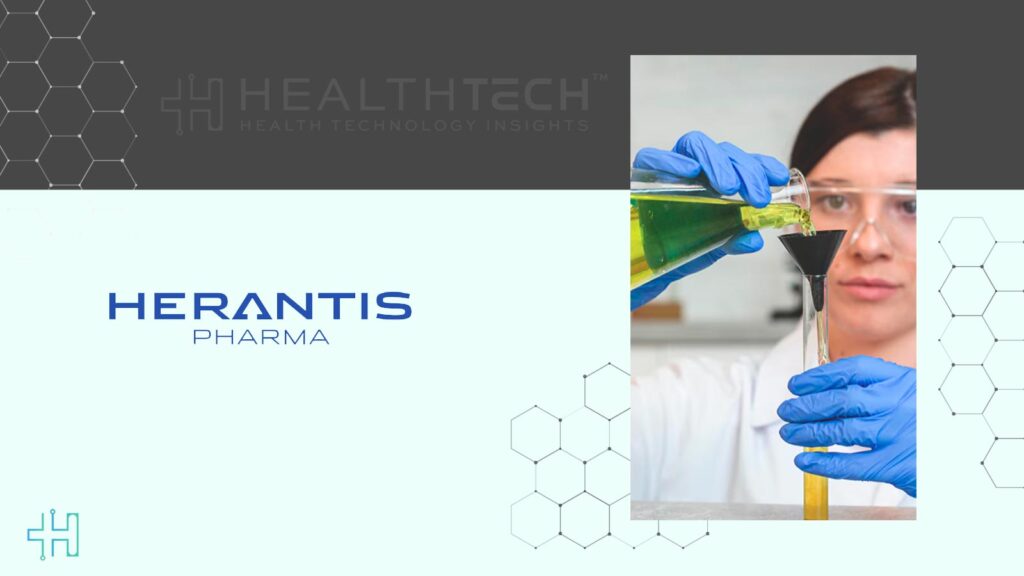How leading health tech webinar teams are generating quality leads in 2025 is a movement. Across the U.S., healthtech innovators are rethinking virtual events to drive genuine engagement.
But how are they achieving this? In this article, you’ll learn how top teams are combining data insights, real‑world stories, and tactical marketing to generate quality leads in 2025. You’ll walk away with actionable strategies you can adapt tomorrow.
The Rise of Health Tech Webinars in 2025
Health tech webinars in 2025 have evolved into powerful engines for lead generation, thought leadership, and real-time engagement.
1. Webinars as Vaults of Value
In 2025, 73% of B2B marketers say webinars are the most effective method for generating high‑quality leads. Meanwhile, 95% see webinars as essential to their marketing mix. For healthtech executives, this means shifting webinars from bland slideshows to interactive experiences blending expert insights with tech demos, policy updates, or innovation showcases.
Key Data That’s Shaping Best Practices
Data-driven insights in 2025 are guiding health tech teams to optimize webinar strategies for higher engagement and qualified lead generation.
2. Hard Numbers, Real Influence
- Organizational benchmarks: Companies average 1,877 monthly leads, of which 81% are marketing-qualified.
- Webinars and revenue focus: 53% of marketers now use webinars to drive leads and sales.
- ROI spotlight: The average cost per webinar lead is around $72, a compelling metric compared to other digital tactics.
Together, these data points guide strategy: focus on quality content, scale registration, and track downstream conversion with precision.
Strategy 1: Multi‑Channel, Personal Promotion
Leading health tech teams in 2025 are using multi-channel, personalized promotion to expand reach and attract high-intent webinar registrants.
SEO Meets Webinar Promotion
Healthtech marketers invest heavily upfront in SEO-optimized titles and messaging, a tactic shown to deliver 80% of promo results. This means crafting titles like “AI in Remote Patient Monitoring: What’s Next for U.S. Clinics” and embedding healthtech keywords throughout landing pages.
Tip: Align SEO titles with healthcare and tech blogs. Optimized pages drive organic traffic and feed registration goals.
Co‑Promotion via Cross‑Industry Collabs
Collaboration is pivotal. In 2025, cross-industry partnerships are fueling innovation. Healthtech teams now partner with fintech, logistics, and wellness brands to co-host webinars, unlocking new audiences while maintaining credibility. Bonus: each partner brings their subscriber list and social channels.
Strategy 2: Designing High‑Value Content
In 2025, top health tech webinar teams are winning leads by crafting high-value, research-backed content that resonates with targeted audiences.
Thoughtful, Research‑Backed Discussion
Top teams use thought leadership rooted in fresh data. For example, webinars often distill academic research, saving busy professionals hours. One mid‑sized healthtech firm cited a recent HIMSS study during their session, and registrant engagement spiked by 45%.
Would you rather watch a generic pitch or a session that distills cutting-edge research into patient-centered solutions?
Data‑Driven Formats with Interactive Twist
Livestorm’s 2024 report found 62% of webinars focus on brand awareness and interactive content. In 2025, leaders are adding polls, case demos, and breakout sessions to maintain engagement.
98% of marketers plan to enhance webinars with AI this year. In healthcare, AI tools are used to tailor content, like recommending breakout rooms on telehealth regulation to legal or clinical groups.
Strategy 3: World‑Class Follow‑Up Sequencing
World-class follow-up sequencing is turning webinar attendees into qualified leads by delivering timely, personalized engagement after the event.
Post‑Webinar Nurturing
Webinar registration is only part of the journey. Top healthtech teams craft post-webinar journeys with content offers or free consults, turning attendance into actionable leads.
Automated Personalization
Marketing automation platforms (e.g, HubSpot) are used to segment and nurture leads based on engagement. One regional healthtech firm saw a 35% boost in MQL-to-SQL conversion after segmenting by poll responses and attendance duration.
Strategy 4: Tech Stack That Scales
A scalable tech stack in 2025 empowers health tech webinar teams to deliver seamless, compliant, and data-rich virtual experiences at scale.
Choosing the Right Platforms
The live webinar software market hit $4.52 billion in 2024, growing at nearly 9.8% CAGR.But selecting the right one matters: U.S. teams prioritize HIPAA‑compliant platforms with interactive features, breakout rooms, and robust analytics.
Checklist:
- HIPAA compliance
- AI enhancements (transcripts, Q&A bots)
- Engagement tracking
- Easy integration with CRM
Modular Infrastructure & Headless CMS
Webstacks recommends headless CMS and modular designs to maintain agility. This lets marketing teams quickly build and publish registration pages without IT bottlenecks.
Strategy 5: Metrics That Matter
Focusing on metrics that matter helps health tech teams measure true webinar success—from lead quality to conversion and revenue impact.
Beyond Clicks: Holistic ROI
Tracking quality leads: 81% of captured leads are marketing-qualified. But healthtech teams also monitor KPI such as cost per lead, conversion post-webinar, pipeline velocity, and revenue influence.
Benchmarking Engagement
Zoom’s data shows 64% of B2B marketers hosted a webinar in the last year. Healthtech teams compare their attendance and engagement metrics against this benchmark. If they underperform, they A/B test elements like call-to-action placement or interactive features.
Spotlights: Real‑World Innovations
Real-world innovations showcase how leading health tech teams are creatively leveraging webinars to drive engagement, education, and lead generation.
1. Syneos Health’s Trends Webinar
Syneos Health launched “2025 Health Trends: Reimagining What’s Possible” in January. The session attracted cross-industry leaders in biotech, trial design, and care delivery. Their secret? Combining biotech demos with interactive Q&A and downloadable benchmarking reports, generating thousands of high-quality leads.
2. SAS Analytics Event
SAS’s webinar on Life Sciences trends targeted healthcare analysts. By highlighting predictive analytics frameworks and offering post-event toolkits, they engaged deep-dive audiences. Follow-up resulted in multiple enterprise trial signups.
Common Traits of High‑Performing Webinar Teams
High-performing webinar teams share common traits: strategic planning, data-driven content, cross-functional collaboration, and a relentless focus on lead quality.
- Intent-driven design: Every webinar begins with a clear goal, awareness, MQLs, or demos.
- Cross-functional planning: Marketing, compliance, clinical, and sales align from day one to shape content.
- Fresh data & thought leadership: No stale stats bring recent research and speak to decision-maker concerns.
- Interactive experience: Polls, breakouts, demos, Q&A to shift passive attendees into active participants.
- Strong follow-up frameworks: Automated, personalized nurture flows for post-webinar momentum.
What’s Next: 2026 and Beyond
Looking ahead, healthtech teams are preparing for:
- Micro‑events: Ten‑minute on-demand bite-sized webinars for busy execs.
- Hybrid formats: Small in-person roundtables, where select registrants meet with experts.
- AI-powered matchmaking: Platforms that recommend sessions or content based on past behavior.
Generating Quality Leads in 2025
How Leading Health Tech Webinar Teams Are Generating Quality Leads in 2025 isn’t just a phrase; it’s a roadmap. From SEO-optimized registration funnels and data-rich content to cross-industry partnerships and personalized follow-ups, the future is bright.
By adopting these practices, you’ll transform your webinars into engines that drive high-intent engagement and meaningful business outcomes.
FAQs
- What makes a health tech webinar “high-value” in 2025?
A high-value webinar in 2025 delivers more than just information it offers actionable insights backed by current data, features engaging formats like live Q&As or case demos, and speaks directly to the audience’s challenges and goals. It’s the kind of session attendees walk away from saying, “That was worth my time.”
- How do webinar teams ensure they’re attracting the right leads, not just a large audience?
Top teams prioritize quality over quantity by using targeted promotion strategies, like SEO-driven content, personalized invites, and niche partnerships. They also design registration forms and polls to segment attendees by interest, which helps tailor follow-up efforts and align leads with specific solutions.
- What role does AI play in webinar success today?
AI helps health tech marketers personalize content in real time, recommend relevant sessions, and automate follow-up messaging based on attendee behavior. It also analyzes engagement data, like which slide kept viewers hooked, to improve future sessions. It’s like having a smart co-host behind the scenes.
- Are smaller health tech companies able to compete with big players in the webinar space?
Absolutely. Smaller firms often shine because they can move faster, personalize content more deeply, and build authentic community engagement. With the right tools and a thoughtful strategy, even lean teams can run impactful webinars that rival the reach of larger organizations.
- How soon should follow-ups happen after a webinar to be effective?
Ideally, follow-ups should go out within 24 to 48 hours, when interest is still fresh. The best teams send a mix of thank-you notes, resource links, and personalized next steps, like a quick consult or demo invite. It’s not about rushing, it’s about staying relevant and responsive.






